Alaska RVing: Alaska SeaLife Center and Exit Glacier, Seward
Our second full day in Seward would have lots of variety, and we split up for a while. Our first job of the day, though, was to find a new place to park our motorhomes. Unable to find a site at the City’s waterfront parks in town, we had booked 2 nights at the Stoney Creek RV Park. When we decided to stay for a third night, they had nothing available.
Two nights at Stoney Creek RV Park had cost a total of $78.28 with taxes ($103.26 Canadian). Their Web site says “Welcome to Seward’s only luxury RV Park!”. Even by Alaska standards, what a joke that is.
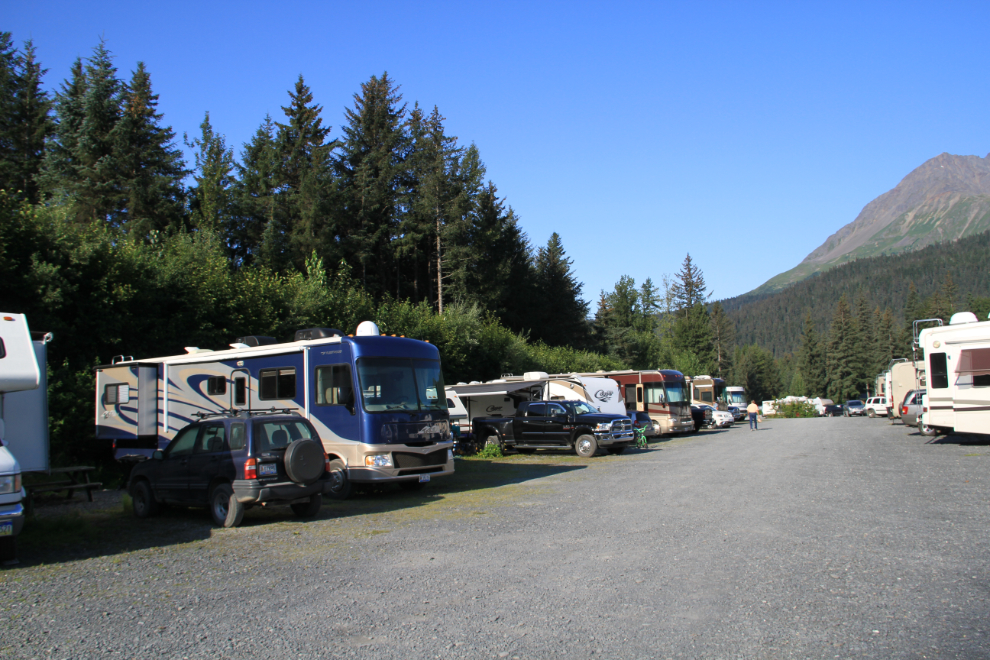
There are some very nice sites along the creek, there are lots of average sites, and then there is the back corner that we got. The rigs on both sides of us were workers in Seward on jobs.
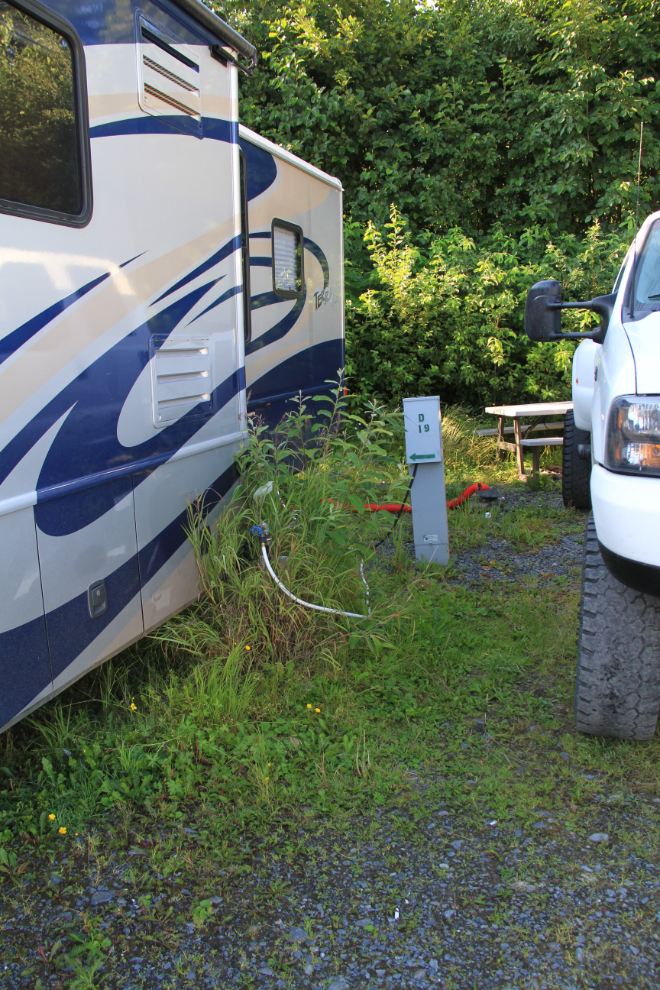
Here are some of the sites nearest the creek, which is about 100 feet to the right behind a thick screen of willows. A trail to the right makes for good dog walking
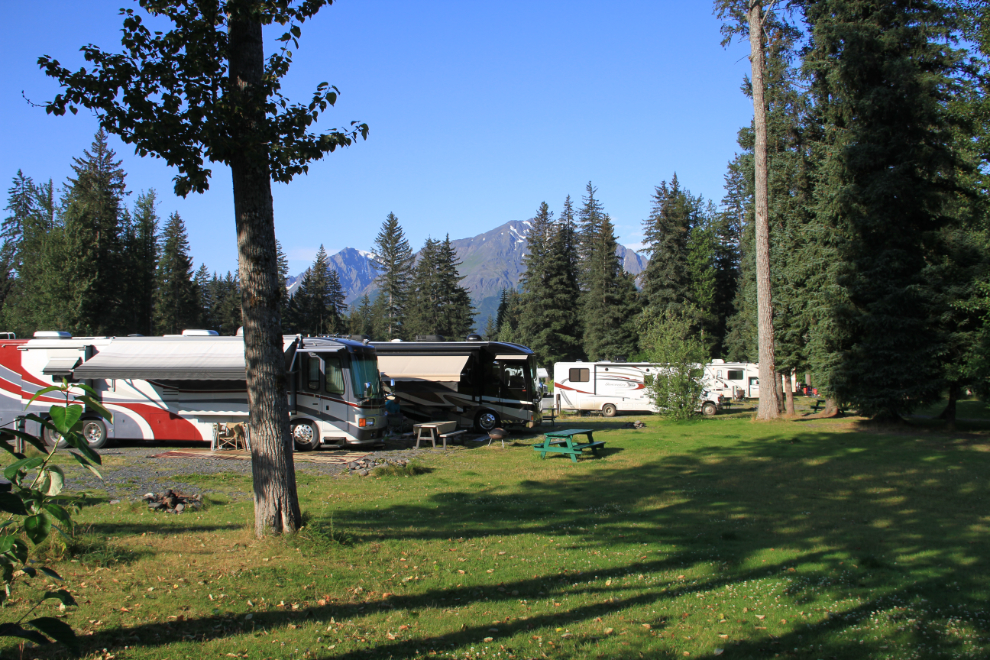
The men’s bathroom with minimal privacy – 2 shower stalls are to the left. This is for a campground with 81 sites.
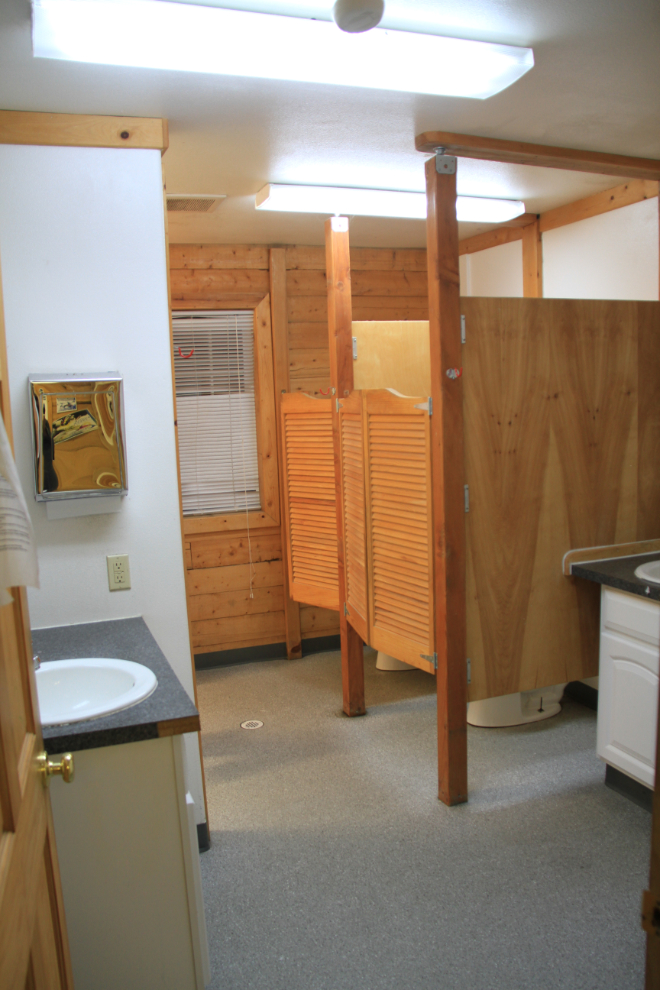
The laundry – MJ used it while we were out on the wildlife cruise, and said that it was adequate.
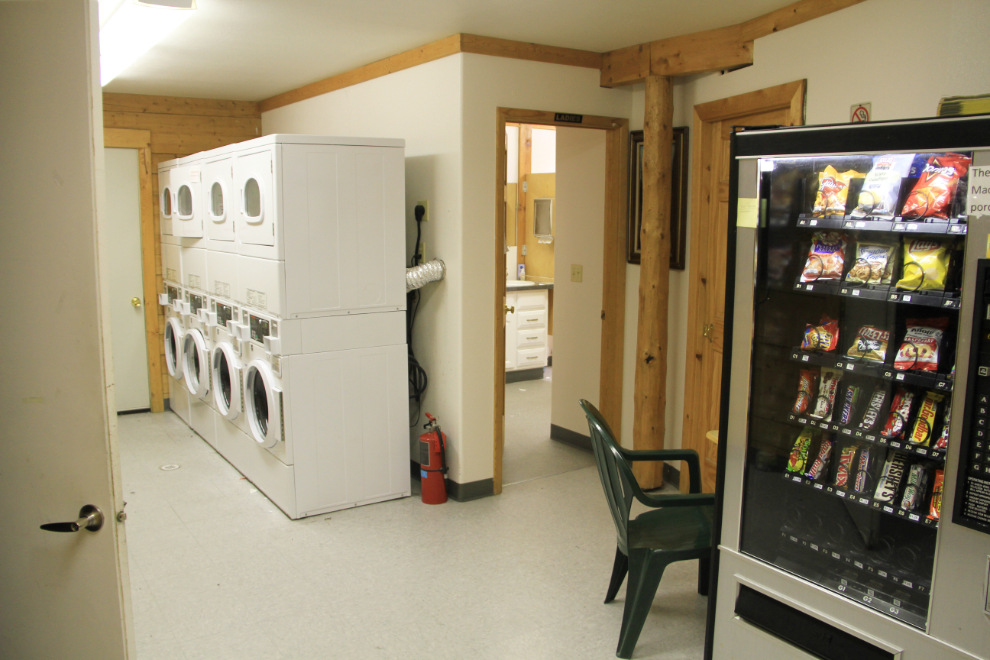
I didn’t see the firewood sales guy make any money. We didn’t have a firepit, and I didn’t see many sites that did.
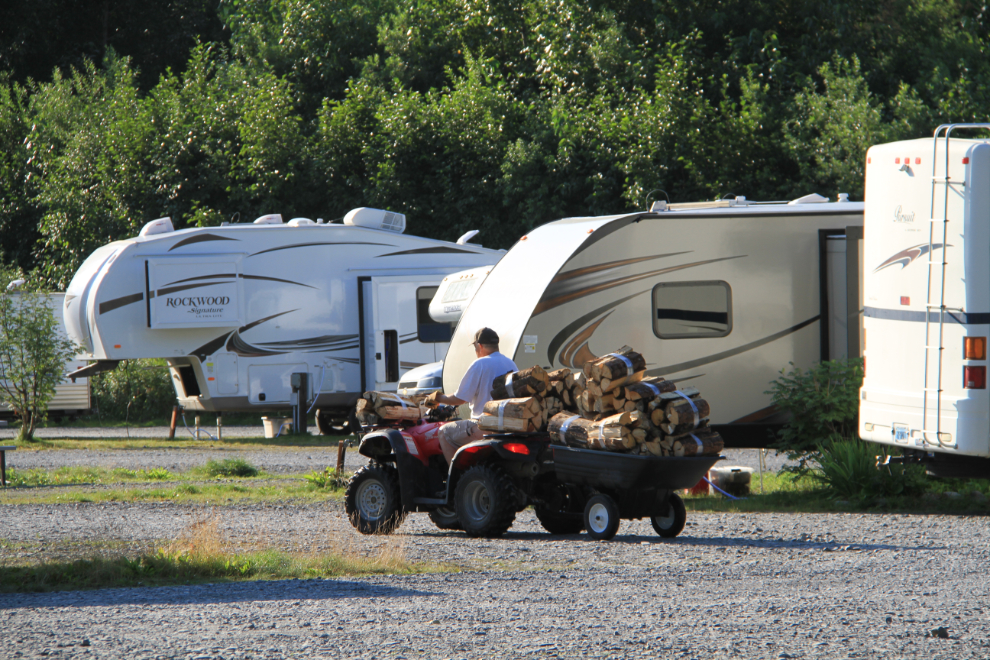
We moved a couple of miles, to Bear Creek RV Park. Although old and basic, the sites were nicer than the ones we got at Stoney Creek, and we got 2 full-service sites side by side for $41.20 each ($54.35 Canadian).
The Bear Creek park was in a much nicer location than Stoney Creek – a short walk up the road is a lovely little park on Bear Creek, as well as the Bear Creek weir, a great spot for watching spawning salmon.
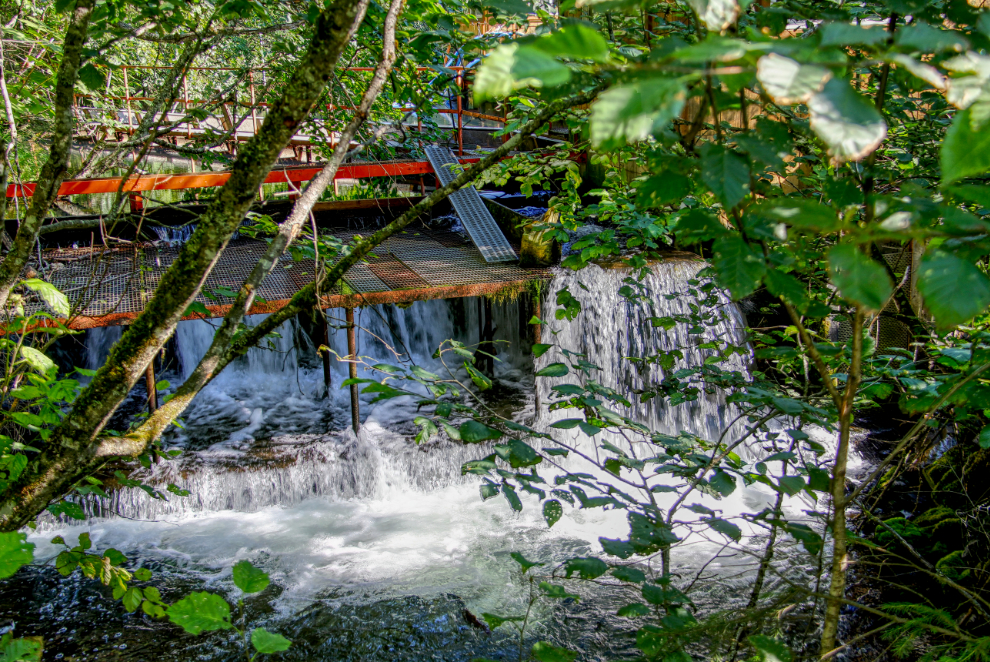

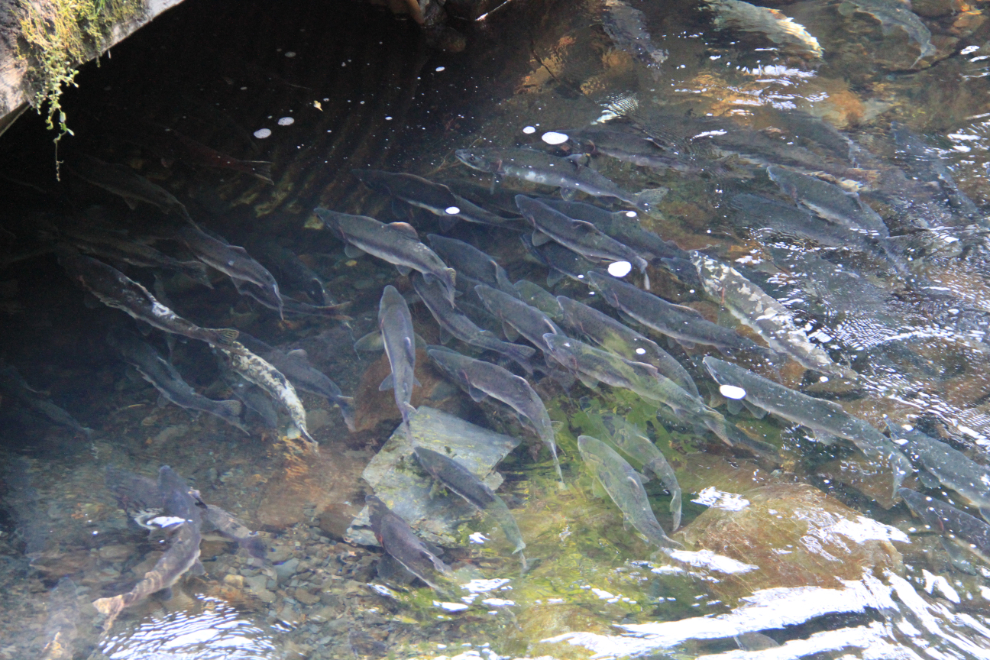
Happy with our new home-for-a-day, we got the fur-kids settled for a long nap and then on the way into town decided to go for a nice lunch on the waterfront. Chinook’s Bar and Grill turned out to be an excellent choice. I had halibut and chips, Cathy had sesame halibut, and both were extremely good. With 3 beer, our bill was $65.15 plus tip.
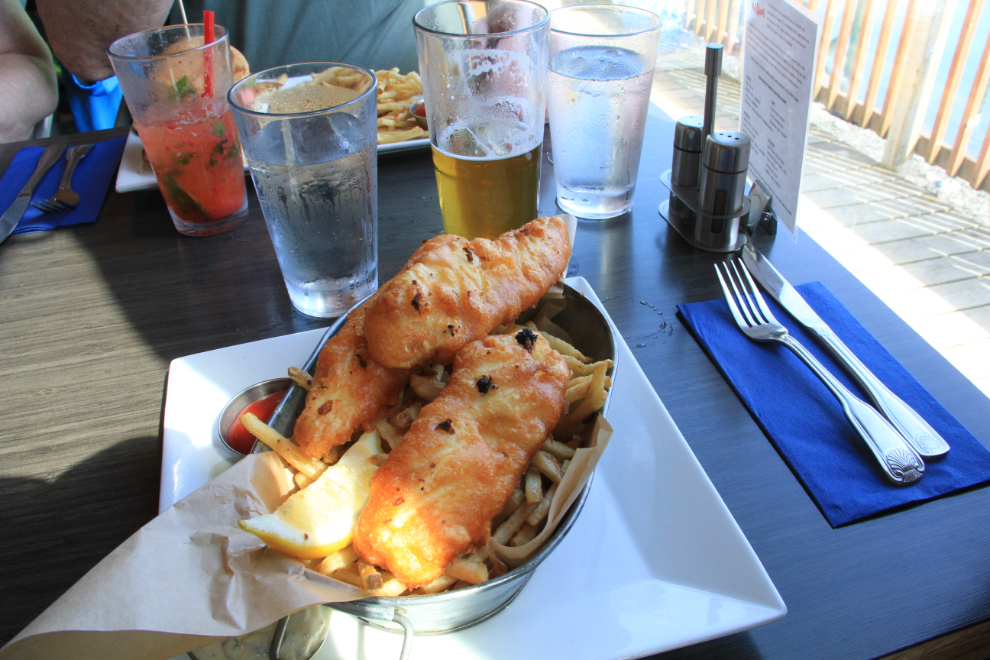
The view over the marina from our table was at least as wonderful as the food on it!
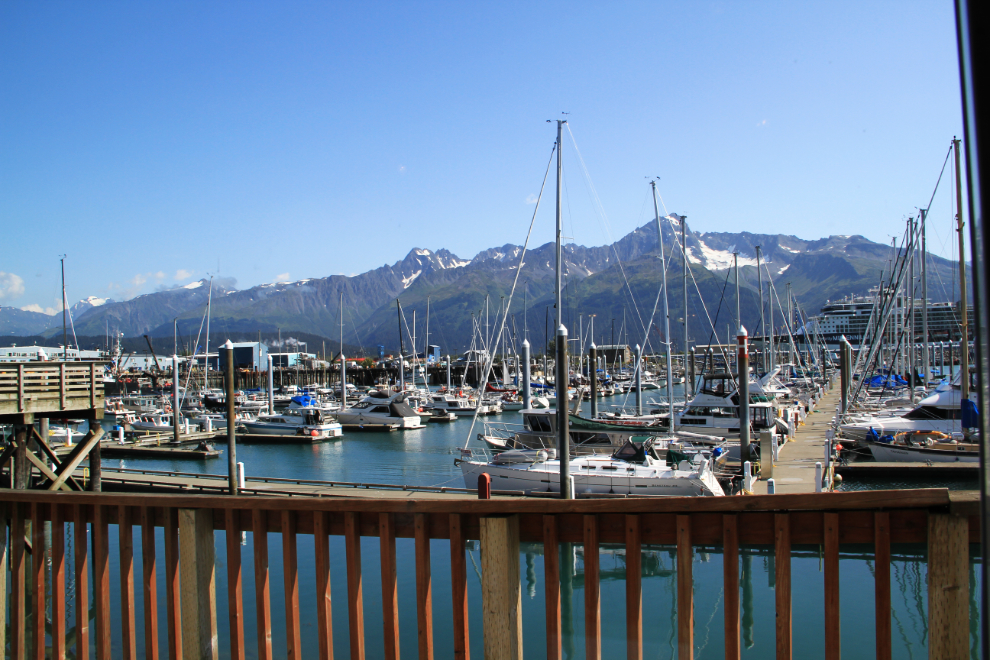
Fully satisfied with the way the day was going, it was time for the main activity of the day, a visit to the Alaska SeaLife Center. With AAA discount, admission was $18.72 each. This photo shows the entrance, shot in HDR to show both the interior and the outside.

There’s a lot to see, but I always like to start at the Discovery Pools (“touch tanks”) where you can touch a variety of sea creatures. Among other sensations, feeling hundreds of tiny suckers grabbing your finger is something that you can’t even experience while scuba diving, as gloves are needed in the cold Northern waters.
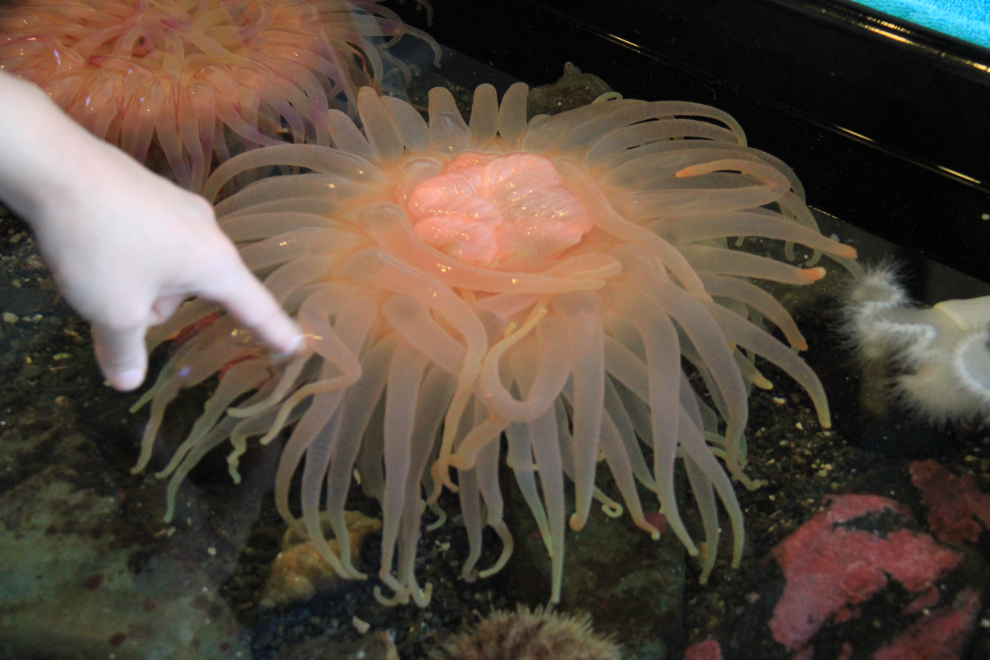
The Walter J. and Ermalee Hickel Overlook offers a wonderful view over Resurrection Bay. Walter Joseph “Wally” Hickel moved to Alaska in 1940, and eventually became the second Governor of the state. He and his wife were regular visitors to the SeaLife Center.
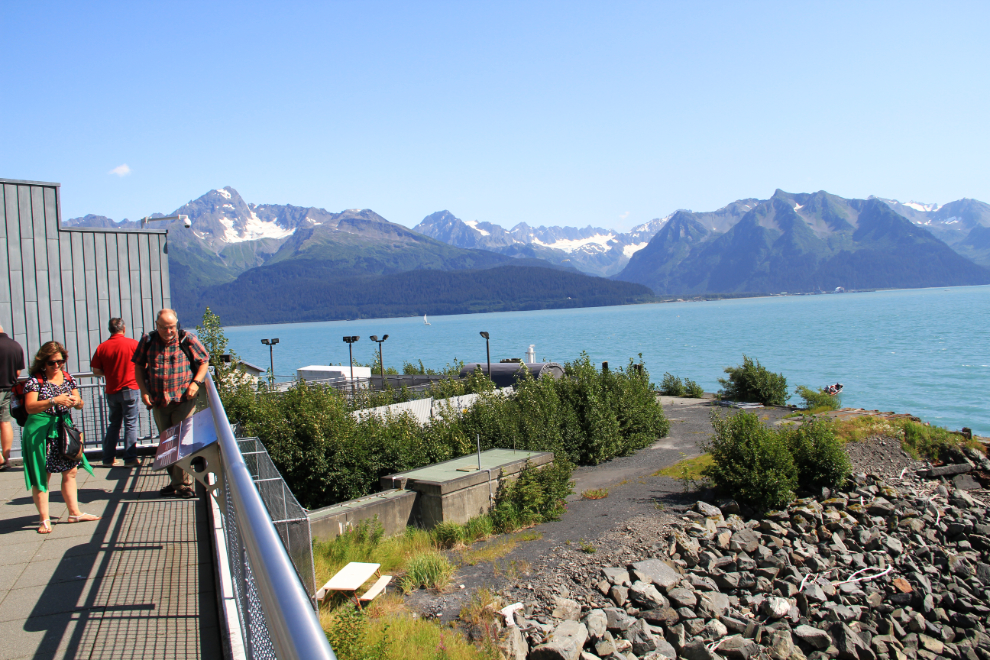
The seabird exhibit has the deepest seabird pool (21 feet) in the U.S. Several bird species including horned and tufted puffins, red-legged Kittiwakes, common murres, black oystercatchers and pigeon guillemots live and breed in this 105,000 gallon exhibit. The photo below shows a couple of the horned puffins (Fratercula corniculata).
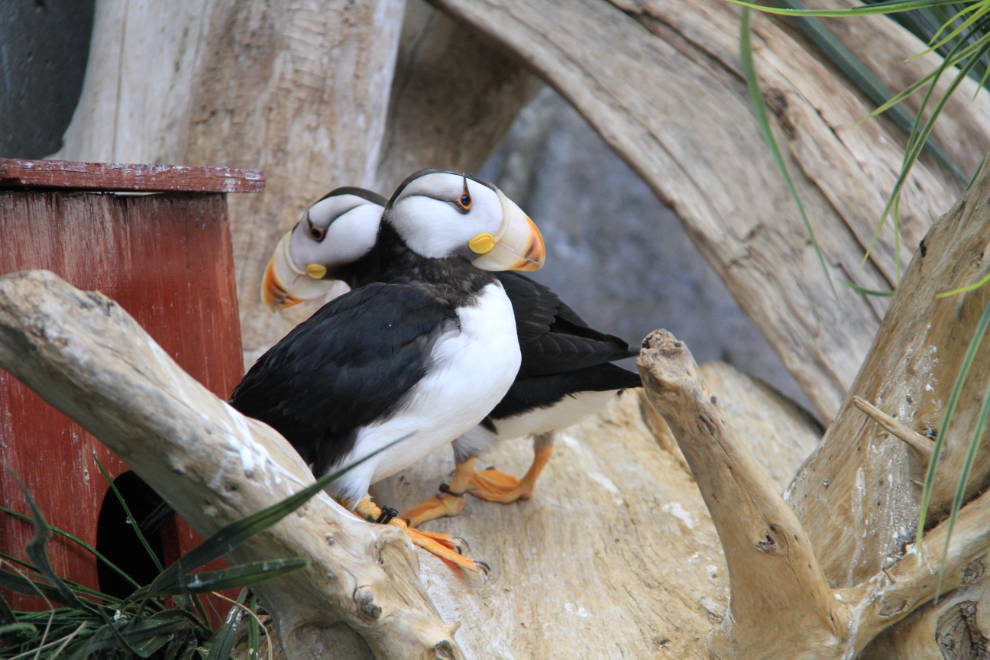
Red-legged kittiwakes are only found on five islands — the Pribilof Islands and at the end of the Aleutian Island Chain. They nest on ledges on vertical sea cliffs. It’s thought that individuals may move south and east from breeding areas in the fall, but this and much about their natural history is still unknown.

My favourite spot at the center is probably the underwater viewing windows at the Steller sea lion habitat, a 162,000-gallon tank that resembles the sea lion haul-outs found in the area.
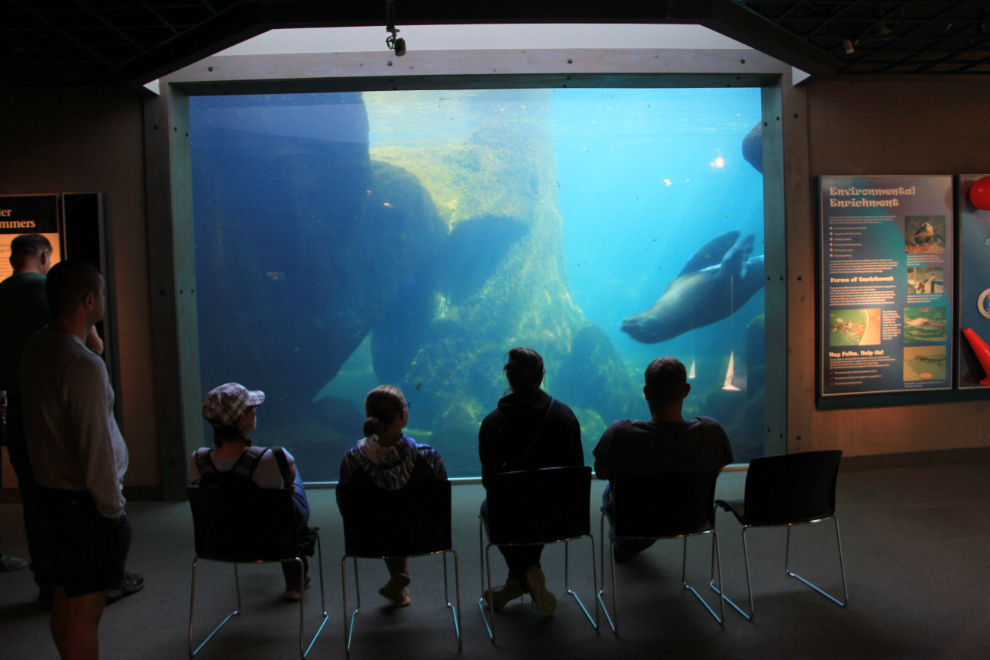
It’s very cool to be able to watch puffins swimming underwater!
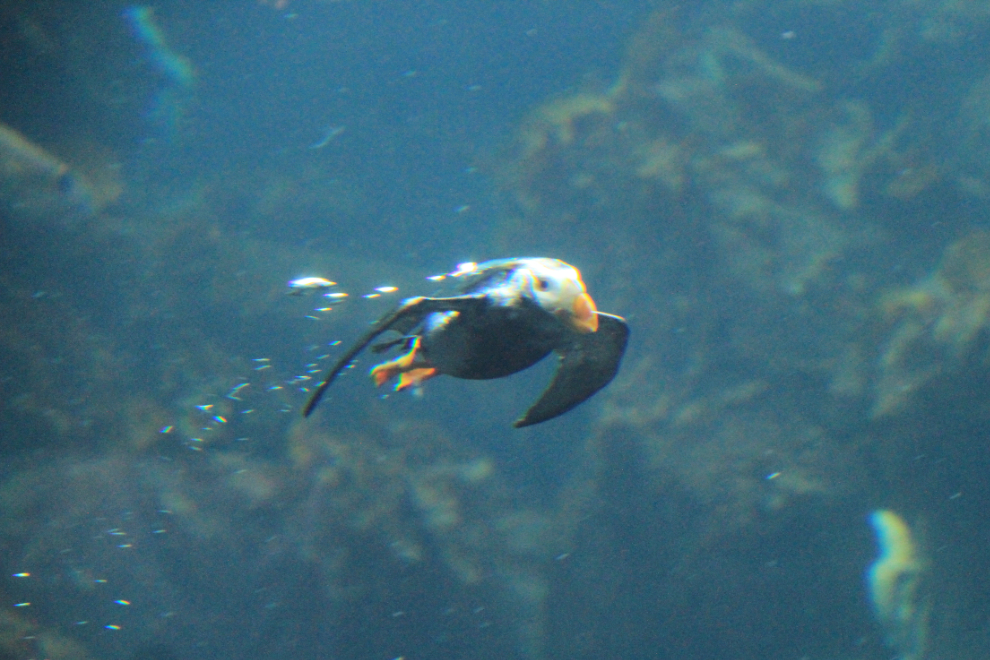
With everybody happy with the visit, it was time to move on. The historic Alaska Railroad station is next to the SeaLife Center.
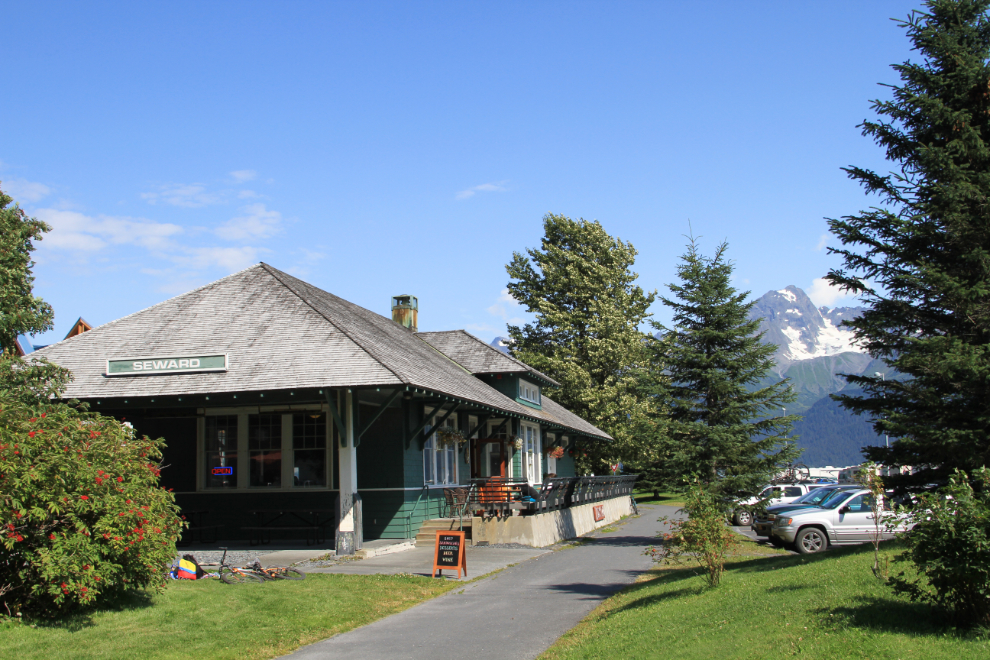
For the rest of the afternoon, the girls wanted to do some shopping/browsing, Jim wanted to go back to the RV park, and I wanted to go hiking at the Exit Glacier. I had them drop me off at the glacier parking lot, and I’d meet them back there in 2 hours.
The hiking at Exit Glacier turned out to be quite different than I’d expected. The glacier has retreated dramatically in recent years, and even the Web site has incorrect information – you can not currently get to the toe of the glacier, which has retreated into a tight canyon made inaccessible by a river.
There’s wonderful variety in the 3 trails that I did hike, though (2 completely and 1 partially). They all start off in a pleasant forest.
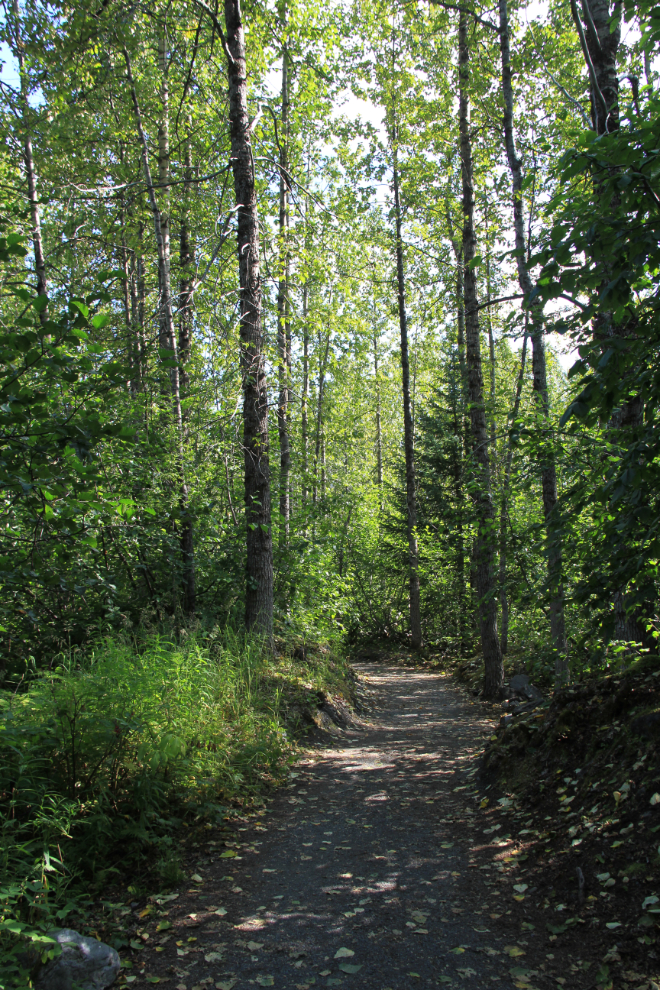
The Glacier View trail is a ½-mile wheelchair-accessible loop which leads to this view of Exit Glacier, where spotting scopes let you get a closer look.
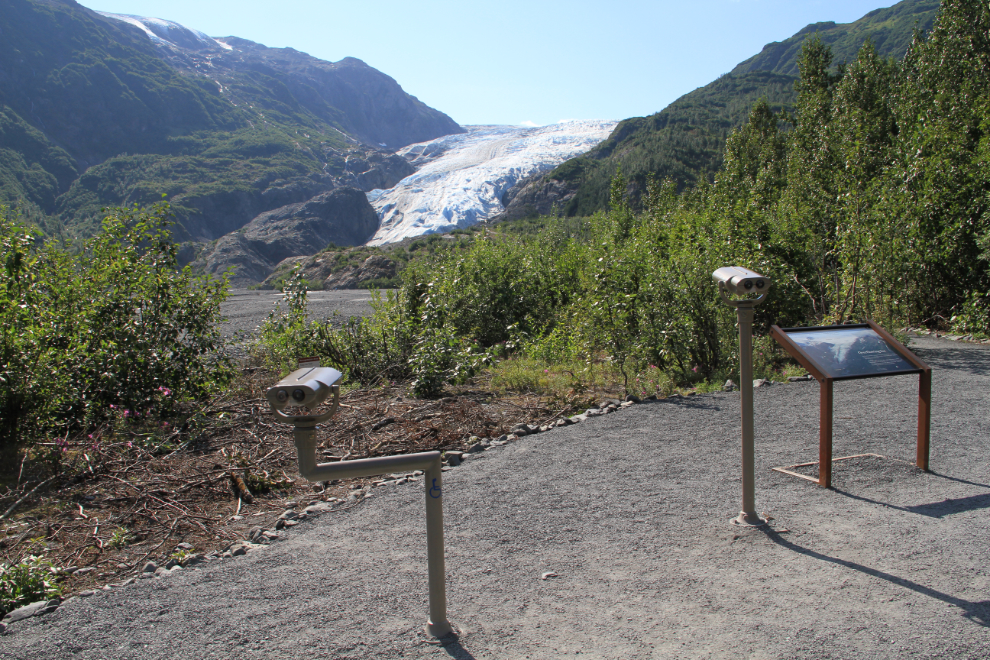
I went out onto the outwash plain, which used to be the access route to the toe of the glacier.
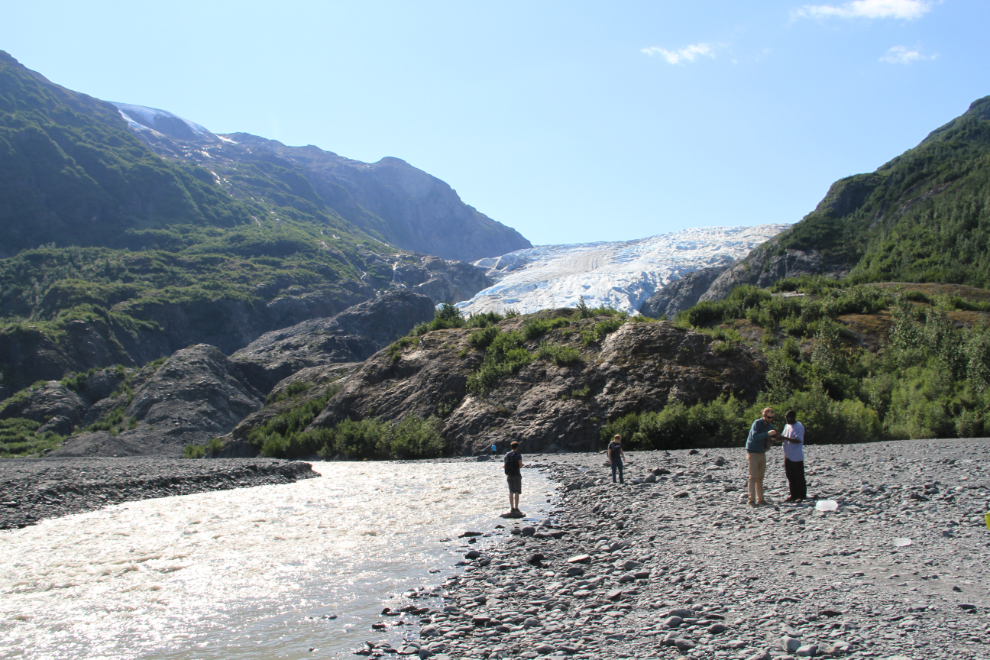
The Edge of the Glacier Trail is described as “a moderately strenous hike [which] leads to a wall of blue ice at the egde of Exit Glacier (1.2 miles)” (I left the typos in 🙂 ). It’s actually an easy hike, as testified to by the families with little kids who were on it, and the blue ice is gone. It’s a very interesting trail, though – the interpretive signage is excellent, particularly the many signs showing where the glacier used to be at various times. This sign marks the spot where the ice was in 1998 – and the last time I was at Exit Glacier was several years before that, so it really is a very different place!
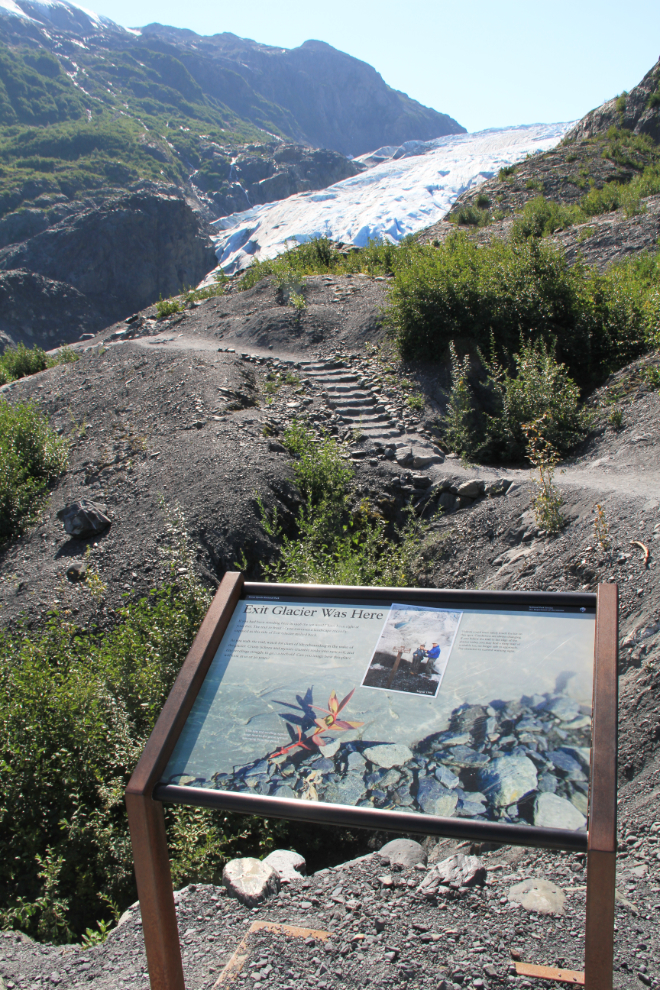
The end of the Edge of the Glacier Trail.

I hiked up the Harding Icefield Trail for a half-hour or so, but ran out of time before reaching any great viewpoints that offered a new perspective. This photo was shot in HDR to bring out the details of the trail, which was in deep shadow.
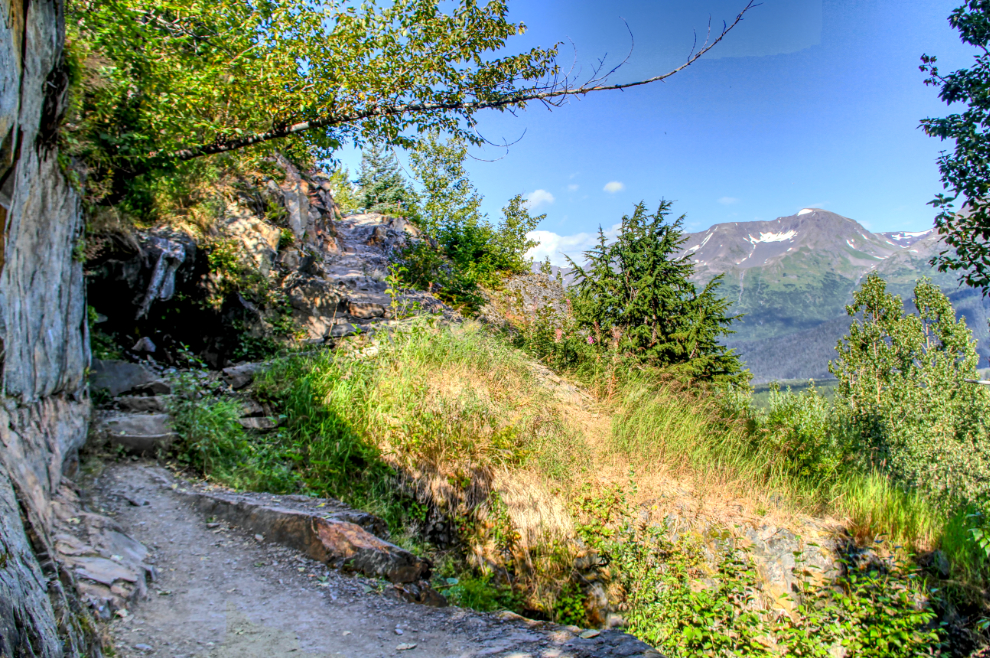
A final shot of the visitor centre while I waited for the girls to arrive.
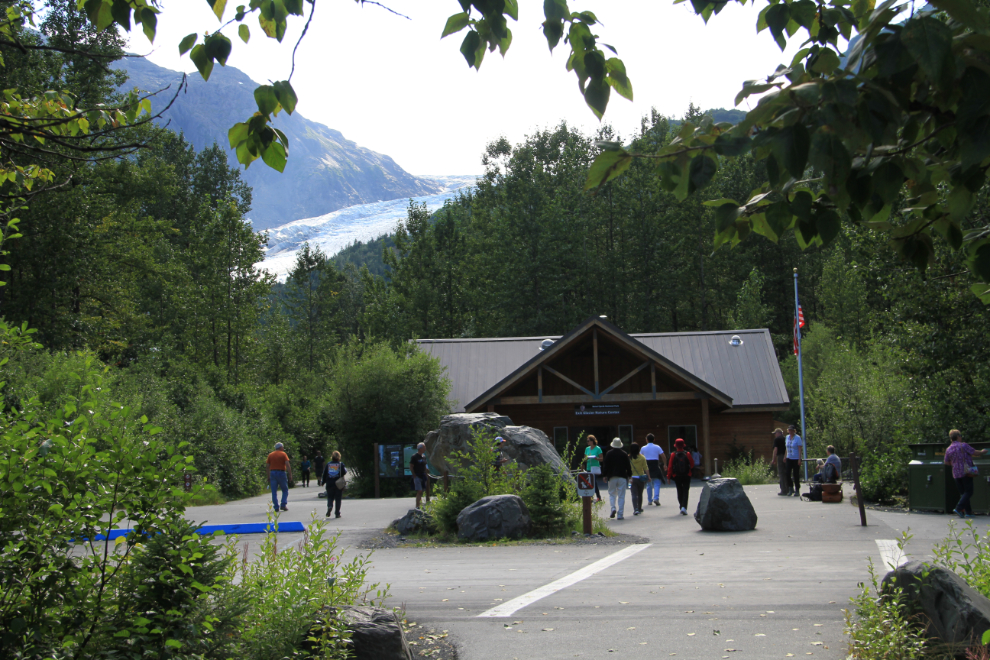
Everyone agreed that this had been an excellent day, with each of us getting what they wanted out of it. Tomorrow, we’d be heading north to Talkeetna, which was mostly just a stopping place on the way to our real destination, Denali National Park.